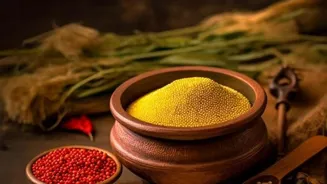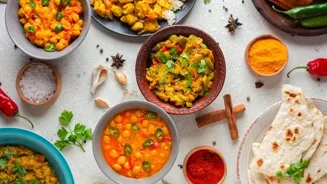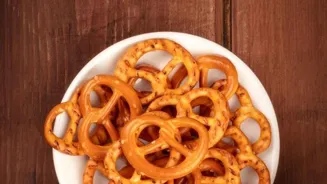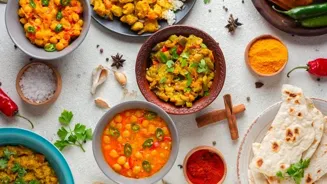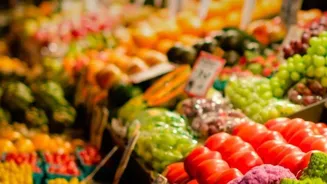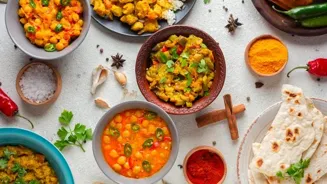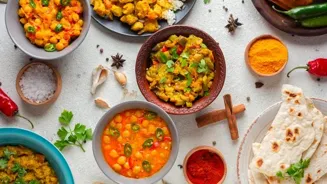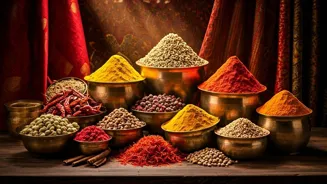Unlock the Origins of Popular Indian Dishes! Dive into the history behind your favorites and be amazed. Let's explore together
Namaste readers! India, a land of vibrant culture and traditions, is also a culinary
paradise. Each dish tells a story, whispering tales of history, innovation, and regional influences. You think you know your favourite Indian food?
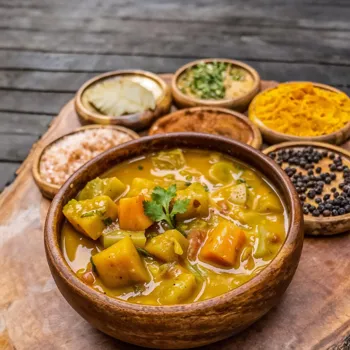
Prepare to be surprised, because we're about to unveil some mind-blowing facts about the origins of seven iconic vegetarian dishes. Get ready to have your taste buds - and your mind - tantalized!
Samosa: A Global Snack Journeyed from Middle East to India
Forget what you know! Everyone thinks samosa is Indian, right? Wrong! Our beloved samosa actually travelled all the way from the Middle East. It was known as 'sambosa' and was introduced to India by traders way back in the 13th or 14th century.
Initially, it was filled with meat, but when it came to India, local cooks gave it a vegetarian twist, filling it with potatoes and peas. Now, it's a staple street food, enjoyed with chutney. Imagine, this tasty snack has journeyed across continents and centuries to reach your plate!
It's a true global citizen in disguise. The name itself evolved over time, transforming from 'sambosa' to 'samosa', reflecting its journey and integration into the Indian culinary landscape. The Indian version is now so popular that most of the world relates samosa to India.
What a sweet journey, indeed.
Rajma, a global gift, now a North Indian staple
Another surprise! Rajma, that comforting bowl of kidney beans in a thick gravy, isn't originally Indian. Kidney beans came from Central Mexico and Andes Mountains. It was brought in into India through trade routes. The way we prepare and consume rajma today is a purely Indian innovation.
It became popular in North India, especially in places like Punjab and Himachal Pradesh, where it's a staple food. The flavour profile, bursting with spices like cumin, coriander, and garam masala, is uniquely Indian. Enjoy it with rice!
The introduction of rajma to India not only enriched the local cuisine but also provided a valuable source of protein for vegetarian diets. This addition has been important for those of the regions where it is widely consumed.
Gulab Jamun: Persian-inspired Indian sweet with rich history
Hold on to your sweet tooth! Gulab Jamun, those syrupy, melt-in-your-mouth balls of sweetness, has Persian roots. The original version, called 'luqmat-al-qadi', was a fried dough ball soaked in honey syrup.
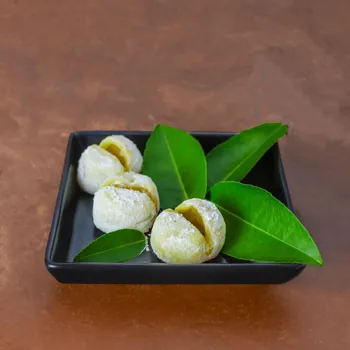
The Mughals brought the sweet to India, and the recipe was adapted using khoya (reduced milk) to make it softer and richer. We also replaced honey with sugar syrup flavored with rosewater ('gulab' means rose in Persian). That is how we got Gulab Jamun.
Different regions in India have their variations: some add cardamom, others saffron. No matter the variation, it's an undeniable favourite at celebrations and festivals. It proves our food traditions are greatly influenced by Persian and Arabic customs.
Aloo Tikki: Indian street food innovation with global flavors
Unlike the others, Aloo Tikki is a relatively recent invention. While potatoes themselves came from South America, the concept of mashing them, spicing them, and frying them into patties is a purely Indian innovation that has been claimed to have started from Uttar Pradesh.
It's a testament to the ingenuity of Indian street food vendors. Each region has its own version, with different spices and toppings. Some serve it with chutneys, others with yogurt and sev.
One can say aloo tikki reflects the changing tastes of Indians, a delightful mix of global ingredients and local flavours.
The ease of making aloo tikki at home, and its versatility in adapting to different spice preferences, has also contributed to its widespread popularity both on street and in homes.
Naan, a Central Asian bread, symbolizes culinary exchange with India
Naan, that soft, leavened flatbread cooked in a tandoor oven, has Central Asian roots. The word 'naan' itself comes from the Persian word for bread. It was introduced to India during the Mughal era. Here, it became a staple in royal courts. The Mughals elevated naan by enriching it with ingredients.
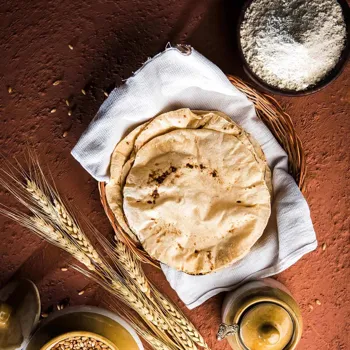
These ingredients included milk and butter. Different varieties emerged, like garlic naan and butter naan, each adding its own flavour. Today, it became an integral part of Indian cuisine, served with curries, kebabs, and more. It's a symbol of culinary exchange between India and Central Asia.
The tandoor oven, essential for baking naan, also has Central Asian origins, highlighting the interconnectedness of food traditions across the region.
Jalebi: A Sweet Culinary Journey from Middle East to India
These vibrant fried spirals, dripping with sugary goodness, are another gift from the Middle East. Jalebi has different names. The origin name is 'zalabiya'. It was brought to India by Persian-speaking invaders where it gained popularity.
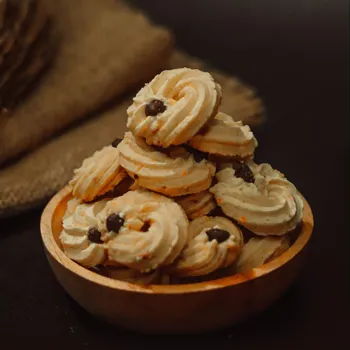
Indian cooks tweaked the recipe, adding ingredients like saffron and cardamom to enhance the flavor. It's a must-have at festivals and celebrations, often paired with rabri for extra indulgence. From the Middle East to India and South Asia, jalebi is a testament to the shared culinary heritage.
The crispy texture combined with the syrupy sweetness makes it irresistible, a perfect end to any meal. It can also be seen as a perfect example of how culinary traditions can cross borders and evolve in new and exciting ways.
Idli, these fluffy, steamed rice cakes, are an important part of South India. They are said to have origins in Indonesia. It made its way to India, with cooks adding spices and flavours. Traditionally made from fermented rice and lentil batter. These are a healthy and light breakfast. Serve it with sambar and chutney! It's a staple in South Indian households. This is enjoyed by people of all ages. Simple, nutritious, and flavorful, idli is a true South Indian delight with a global influence. The fermentation process not only enhances the flavor but also increases the nutritional value of idli, making it a wholesome and healthy breakfast option. The versatility of idli allows it to be paired with various chutneys and sambars. This also allows individual taste preferences.
So, there you have it! Seven fascinating facts about the origins of some of your favourite Indian dishes. Next time you savour these culinary delights, remember the stories behind them.
Food is more than just sustenance; it's a journey through history, a fusion of cultures, and a celebration of human ingenuity. Keep exploring, keep tasting. Keep learning, and keep enjoying the incredible world of Indian cuisine!
AI Generated Content. Glance/InMobi shall have no liability for the content